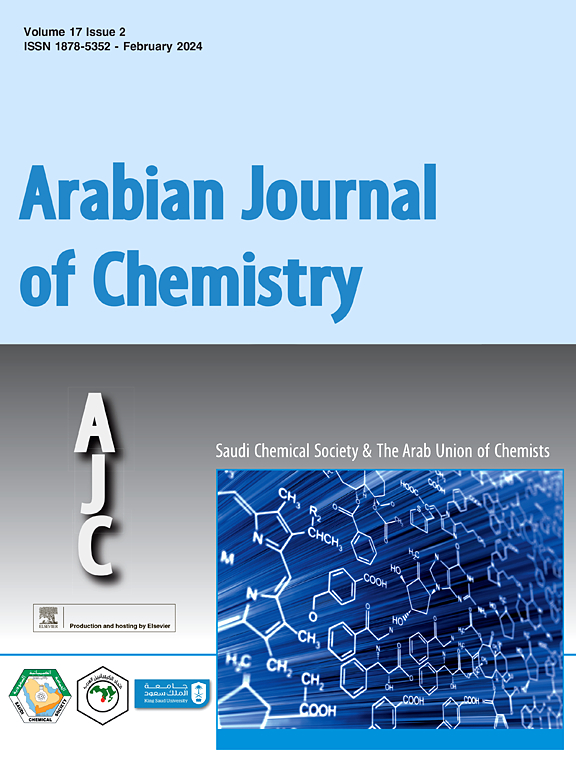Mineralogical and geochemical characteristics of barium slag and ecological risks associated with heavy metals
IF 5.2
2区 化学
Q2 CHEMISTRY, MULTIDISCIPLINARY
引用次数: 0
Abstract
Barium slag (BS) is a typical chemical hazardous waste, and its ecological risks cannot be ignored. Herein, the chemical composition, mineral composition and morphological characteristics of BS were investigated. In addition, the geochemical behaviour was investigated in terms of heavy-metal-leaching toxicity as well as the bioavailability, bioaccessibility and migration of these metals. The ecological risks associated with the release of heavy metals from BS driven by its geochemical behaviour were also evaluated. The BS displayed irregular particle morphologies and distinct surface structures, with heavy metal ions predominantly present in the smaller-sized BS particles. Zn, Ni, Mn and Ba exhibited a stronger potential for migration in plants than other heavy metals. This migration potential was influenced by their total amount and occurrence form as well as the pH conditions of the surrounding environment. The findings indicated that crops should not be planted around BS yards. The bioaccessible risks associated with heavy metals in BS were low. Mn, Ba, Fe and Ni primarily existed in the form of a weak-acid soluble fraction, thereby posing a high migration risk. Thus, attention should be paid to the ecological risks that may arise from Mn, Ba, Fe and Ni during storage.

钡渣矿物学、地球化学特征及重金属生态风险
钡渣是一种典型的化学危险废物,其生态风险不容忽视。研究了BS的化学组成、矿物组成和形态特征。此外,从重金属浸出毒性、生物利用度、生物可及性和迁移等方面研究了重金属的地球化学行为。并对BS中重金属释放的生态风险进行了评价。BS颗粒形态不规则,表面结构明显,重金属离子主要存在于较小尺寸的BS颗粒中。Zn、Ni、Mn和Ba在植物体内的迁移潜力强于其他重金属。这种迁移潜力受其总量、赋存形式和周围环境pH条件的影响。调查结果表明,不应该在院子周围种植作物。BS中与重金属相关的生物可及性风险较低。Mn、Ba、Fe和Ni主要以弱酸可溶组分存在,迁移风险高。因此,应重视锰、钡、铁、镍在贮藏过程中可能产生的生态风险。
本文章由计算机程序翻译,如有差异,请以英文原文为准。
求助全文
约1分钟内获得全文
求助全文
来源期刊

Arabian Journal of Chemistry
CHEMISTRY, MULTIDISCIPLINARY-
CiteScore
10.80
自引率
3.30%
发文量
763
审稿时长
63 days
期刊介绍:
The Arabian Journal of Chemistry is an English language, peer-reviewed scholarly publication in the area of chemistry. The Arabian Journal of Chemistry publishes original papers, reviews and short reports on, but not limited to: inorganic, physical, organic, analytical and biochemistry.
The Arabian Journal of Chemistry is issued by the Arab Union of Chemists and is published by King Saud University together with the Saudi Chemical Society in collaboration with Elsevier and is edited by an international group of eminent researchers.
 求助内容:
求助内容: 应助结果提醒方式:
应助结果提醒方式:


